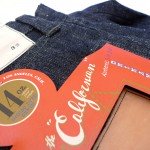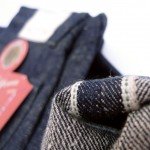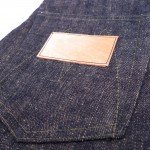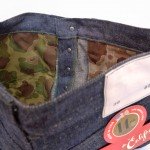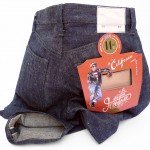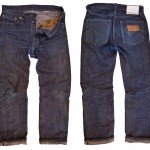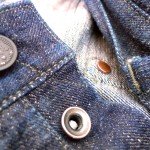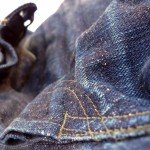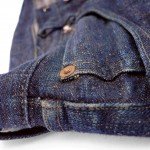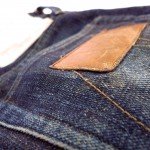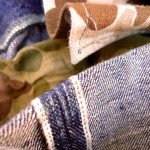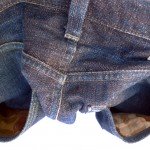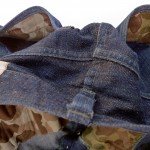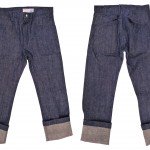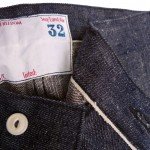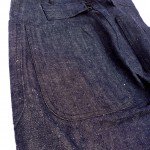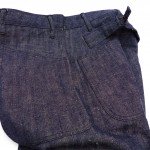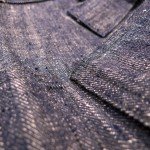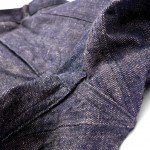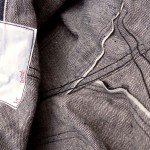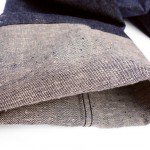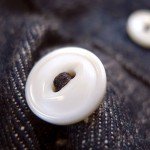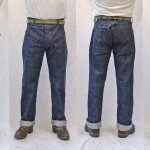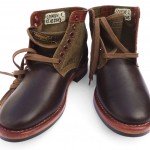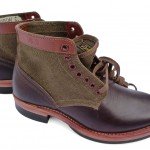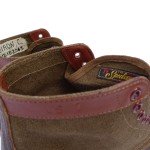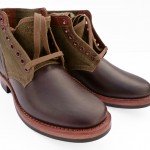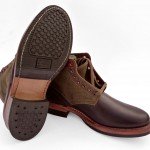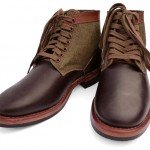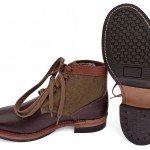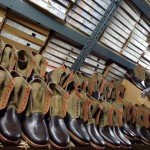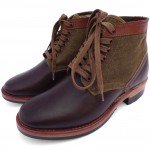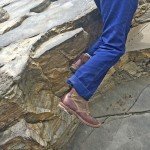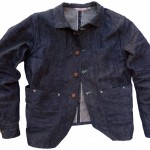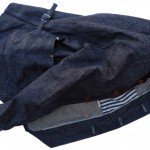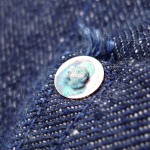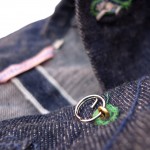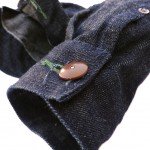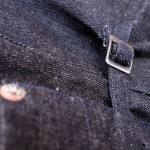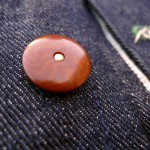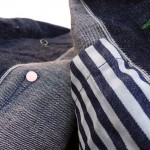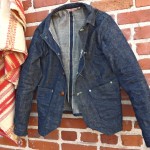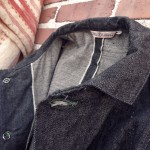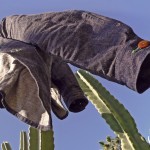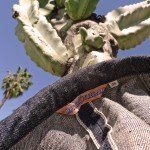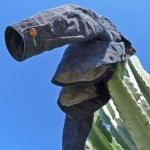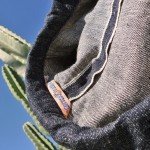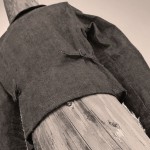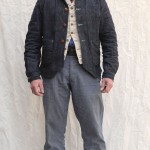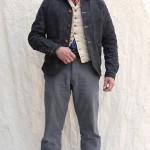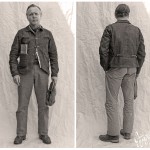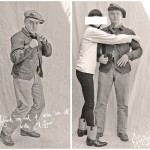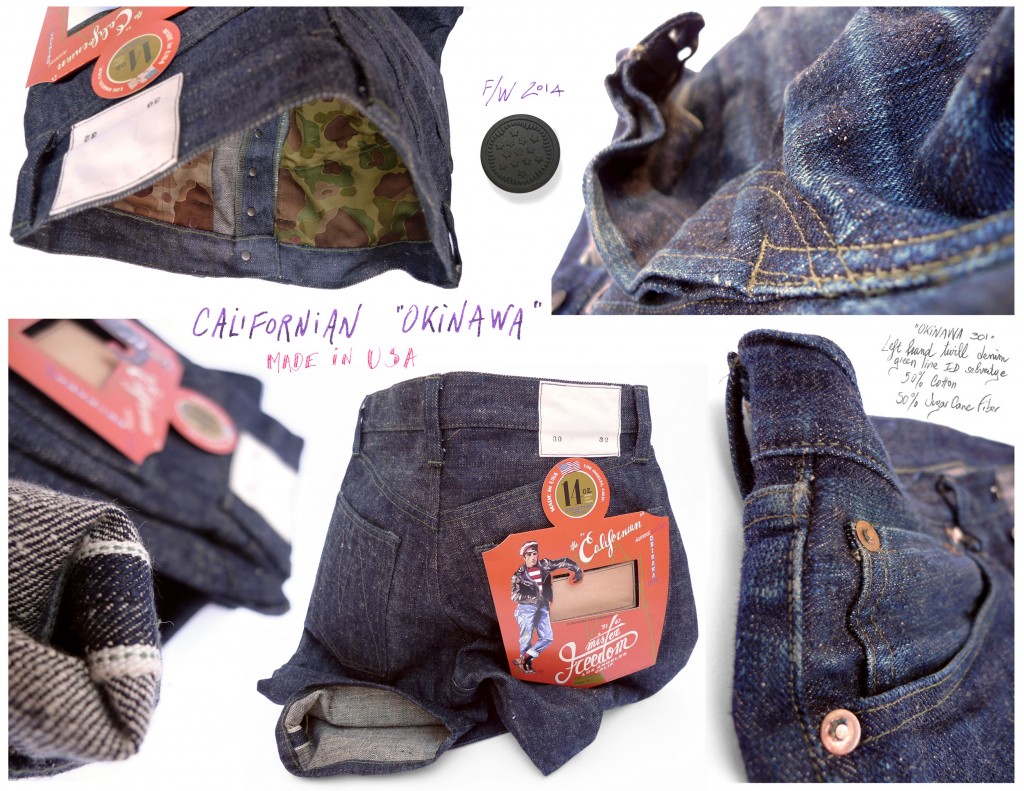
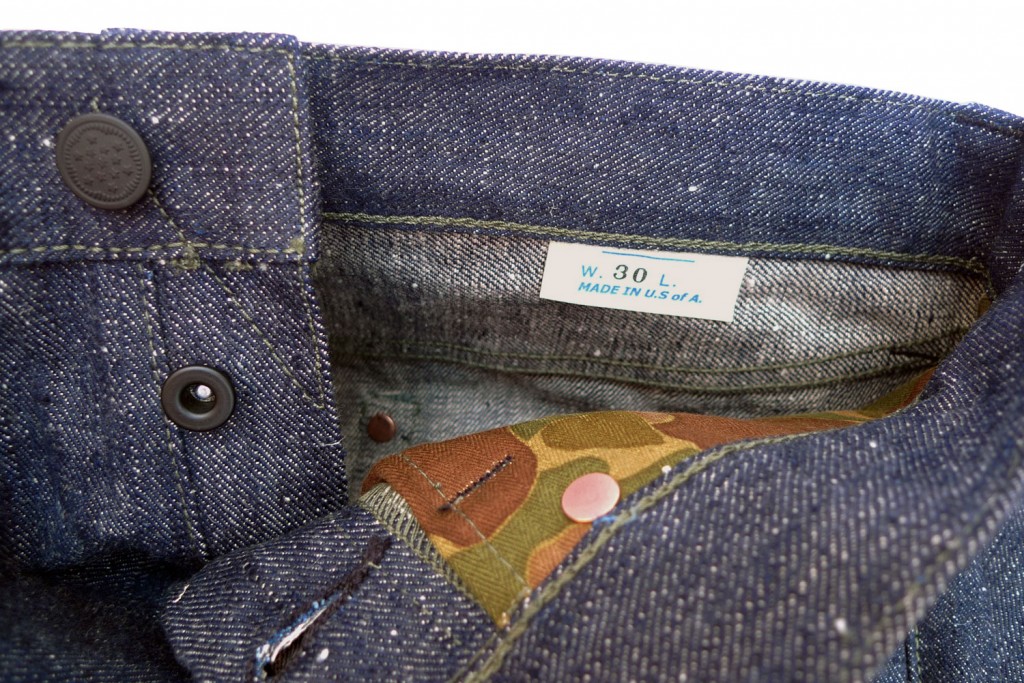
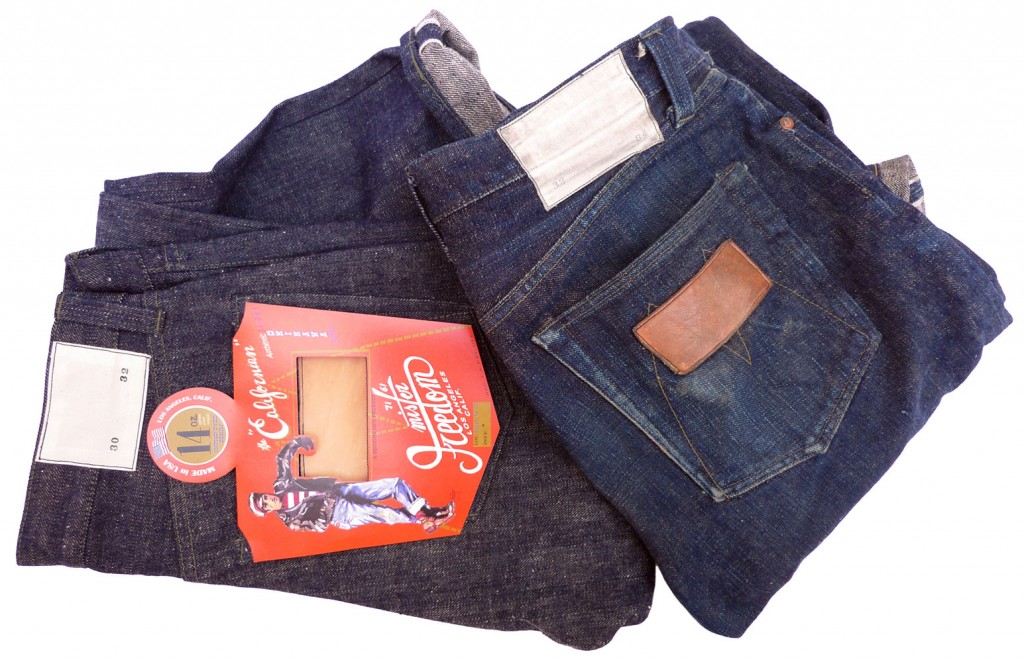
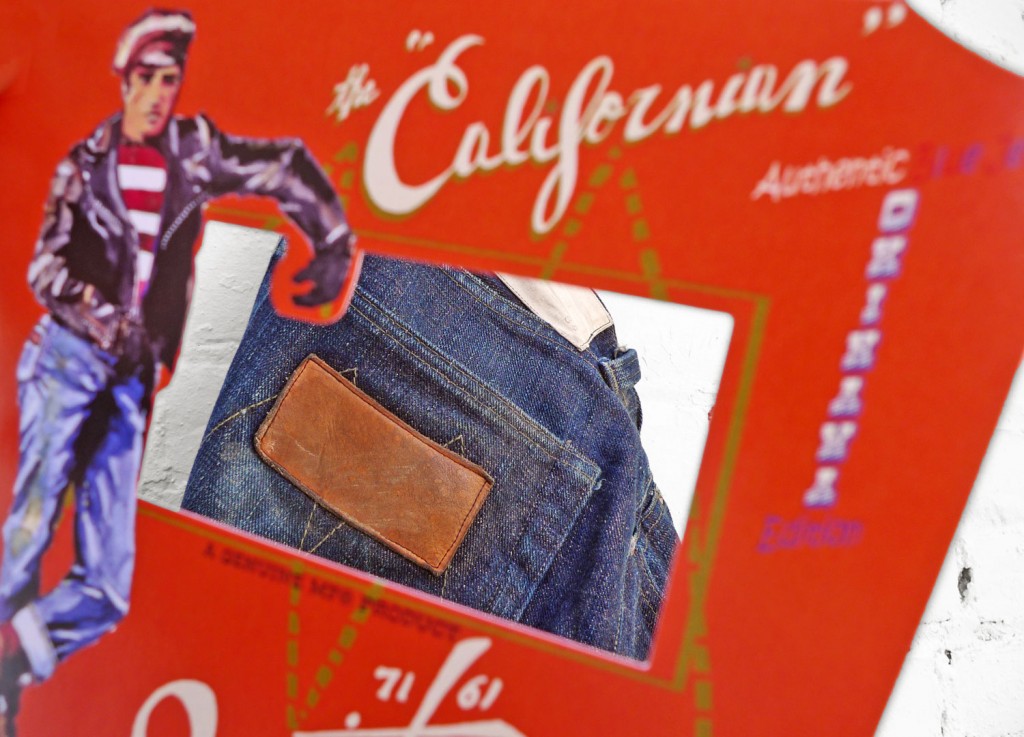
‘Californian’ Blue Jeans, Lot.64 Okinawa issue
Fall 2014 ‘The Sportsman’ Catalog
Some of you might already be familiar with the Mister Freedom® five-pocket blue jeans called the “Californian”…
Now part of the Sportsman catalog, its several reiterations so far have been as follows:
* Californian Lot.54 (NOS Cone denim), Spring 2010.
* Californian Lot.44 (Assorted NOS denim), Fall 2011.
* Californian Lot.64 (SC1966 denim), Fall 2013.
* Californian Lot.64US (SC1966 denim, Uncle Sam edition), Spring 2014.
This will come as disappointing news to Tony Manero expecting a Lot.74 with an elegant 14-inch flare, but up next is yet another straight leg Lot.64…
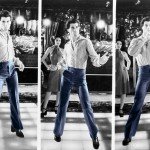 “Yes Tony we do lay-away. As long as it doesn’t turn into a ten-year mortgage” So what’s new you’re saying? Well, if the cut and fit stay unchanged compared to previous Lot.64s, a traditional 1950’s era-type blue jeans with a 1960′s twist, we made this Californian with a 14 Oz. left-hand twill indigo denim referred to as “Okinawa 301”. Milled in Japan from a blend of 50% Okinawan recycled sugar cane fibers and 50% cotton, this narrow loom denim has been a Mister Freedom® favorite for some time.
In its 14 Oz. version, this “Okinawa 301” denim was featured in our 2013 Vaquero Jeans and Loco jacket… all the way down to the 2008 denim Utility Peacoat of our pre-iPhone days.
Serendipity dictated that the island of Okinawa was, in the 1950’s, the temporary home of US advisors en route to the Laotian border and other relaxing retreats around the Vietnamese countryside…
We imagined some members of this Military Assistance Advisory Group (MAAG) had some locally-made five pocket jeans while training or transiting on Okinawa, using left-over surplus stocks of fabrics. Locally-loomed indigo denim, with HBT cotton “Duck Hunter” M1942 reversible camo aka “Frogskin” for pocketing. The hardware was also locally sourced from surplus stocks, such as the black painted “13 stars” or “Burst of Glory” tack buttons typical of US military WW2 utility/work uniforms.
Our choice of un-marked labeling is a reference to ‘sterile’ clothing worn by advisors/Special Forces, when on “over the fence” operations, in places where they were not officially supposed to venture. As in, you get caught you’re on your own…
There is no visible branding/marking on our Californian Lot.64 Okinawa, in an effort to ‘sterilize’ them and their provenance. Besides sizing, both cloth and natural cowhide leather patch are left blank. So, not your typical billboard.
We couldn’t help sticking a “Made in USA” tag on the inside waistband however, rendering the entire spill above slightly incoherent, thanks for noticing.
If you’re thinking “That’s right there sweet Charly, SF wore blue jeans on black ops in ‘Nam! Haha ya numbnuts”, see food for thought below, courtesy of Seal Team 1, Juliet Platoon, 1970.
 Seals Team1, Juliet Platoon, 1970 (Photo Credit goes to the shadow at 07:00) But as usual, let’s not let History get in the way of a good story and move on.
The Californian Lot.64 “Okinawa” are designed and made in Los Angeles, California, by Mister Freedom® in collaboration with Sugar Cane Co, from fabrics loomed in Japan.
Note: Some of the product photos are featuring a worn pair of Californian Lot.64 “Okinawa” (rinsed twice over a 7 months period), in order to show potential denim evolution and natural wear. These photos are not intended to deceive one into thinking we offer factory-distressed garments. Mister Freedom® original denim goods are still only available UN-WASHED/RAW from us.
SPECS:
PATTERN
Original Mister Freedom® pattern, inspired by traditional 1950′s era blue jeans with a 1960’s twist. Silhouette inspired by vintage fits and old photos, BRMC meets Beatniks. Traditional mid-rise with straight slightly tapered leg.
FABRIC
“Okinawa 301”, a 14 Oz. left-hand twill indigo denim, white with green line selvedge ID. Milled in Japan on narrow shuttle looms, from a blend of 50% Okinawan recycled sugar cane fibers and 50% cotton.
POCKETING
HBT cotton “Duck Hunter” M1942 reversible camo aka “Frogskin”, milled in Japan for Buzz Rickson’s. We were told it accidentally fell off the truck, courtesy of Sgt. Ernie Bilko.
DETAILS
* Classic five-pocket design, button fly, selvedge leg seams,…
* Original “M” stitch design
* Unmarked/un-branded cowhide leather patch and cloth patch.
* M1942 ‘frogskin’ camo pocket bags, alternate visible jungle/beach pattern.
* Hidden back pocket rivets with top pocket reinforcement zig-zag stitching.
* Fully lined back pocket with M1942 ‘frogskin’ camo.
* Coin pocket with concealed selvedge.
* All cotton thread Olive Drab color, assorted gauge combination.
* Selvedge button hole flap (yes, it’s under the overlock)
* Flat black-painted Metal “13 Stars” tack waist button (paint will chip off)
* Flat black-painted donut-type fly buttons.
*Unmarked copper riveting for reinforcement.
* Made in USA
SIZING/WASHING
The Californian Lot.64 “Okinawa” comes UN-WASHED and “oversized” so that the actual measurements will approximately match the labeling AFTER an original cold soak/line dry.
Example: A tagged W32 x L34 “Californian” actually measures about 33” x 36” before wash. They will shrink to approx. 32” x 34” after rinse/dry.
Which size works for you depends on how you like your jeans to fit. I wear a comfortable waist 32 in the Lot.64
We recommend getting your usual waist size, although proper fit is a subjective matter and everyone has their own idea of what looks good.
As with all denim twill, shrinkage and stretching will occur for a while and will depend on the wearer’s body, activities and initial fit.
Please refer to sizing chart for approximate raw/rinsed measurements. Please note that in our case, ‘rinsed’ means a 30mn cold soak, spin dry and line dry (ie minimal shrinkage).
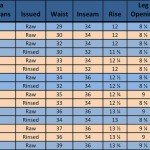
Available RAW/unwashed/Un-sanforized
Sizes
W28 x L32 and L32
W29 x L32 and L32
W30 x L32 and L32
W31 x L32 and L32
W32 x L32 and L34
W33 x L32 and L34
W34 x L32 and L34
W36 x L32 and L34
W38 x L32 and L34
Retail $329.95
Available on www.misterfreedom.com.
Please email sales@misterfreedom.com or call 323-653-2014 with any questions unanswered in the above ramblings.
Thank you for your support as always.


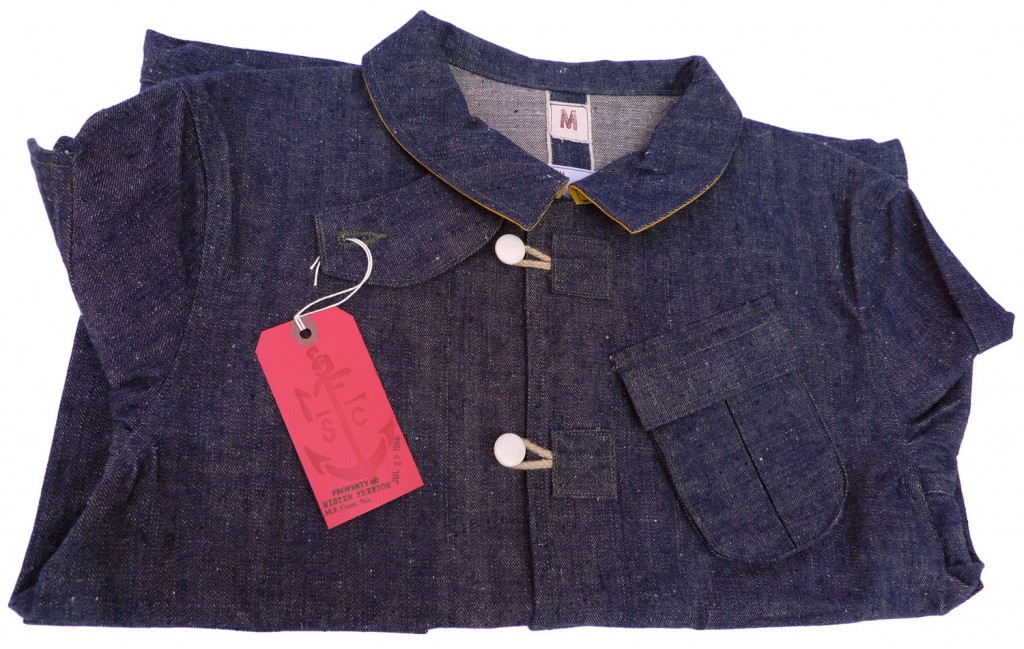
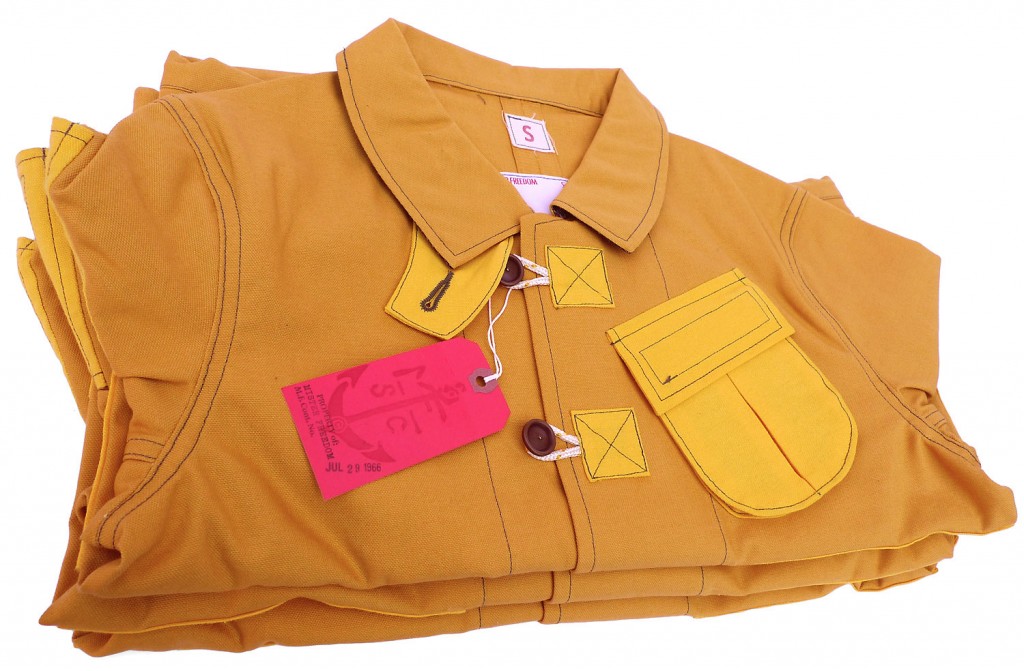
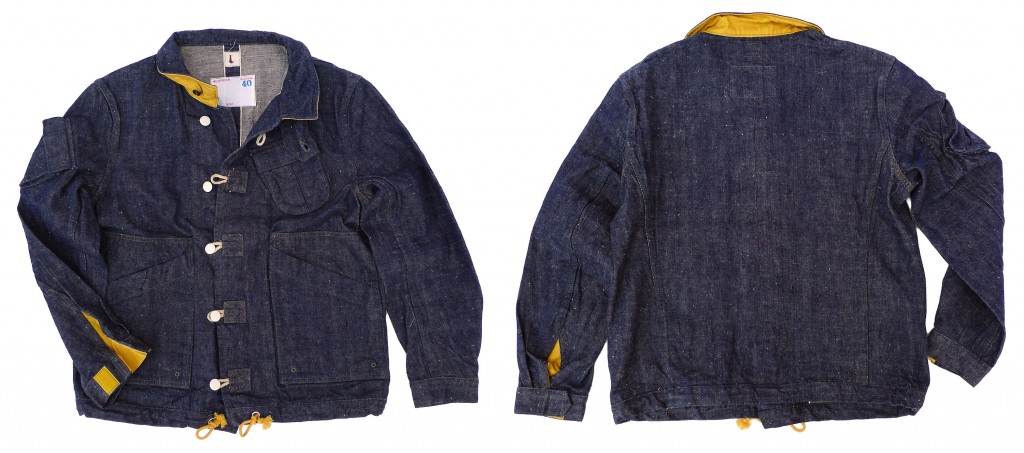
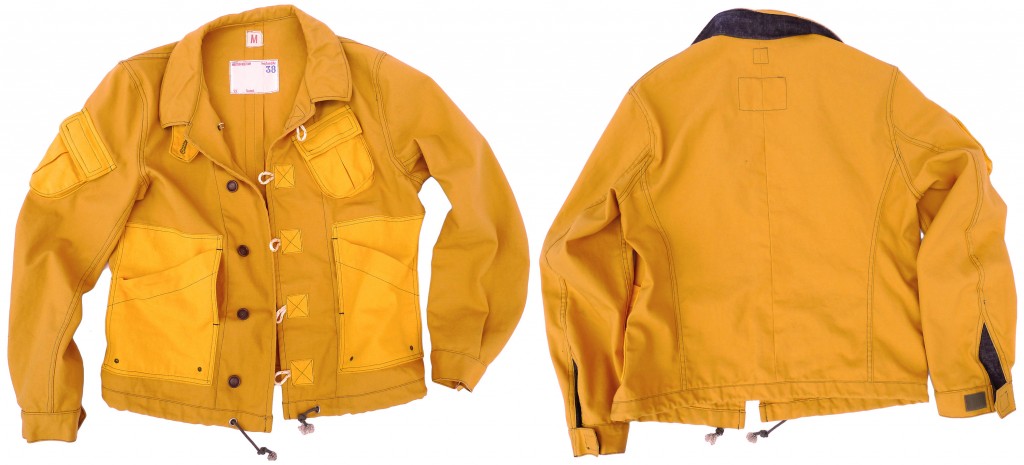
-
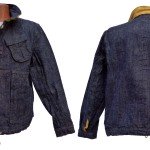
-
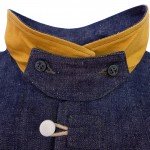
-
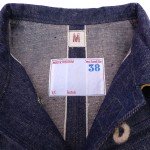
-
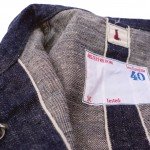
-
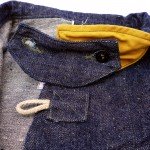
-
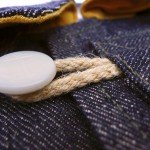
-
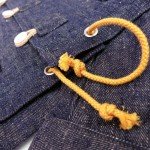
-
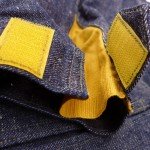
-
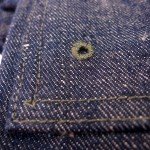
-
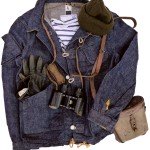
-
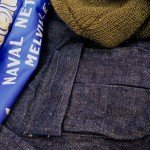
-
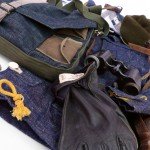
-
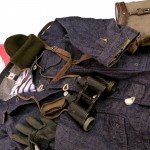
-
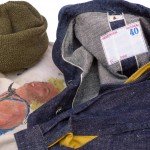
-
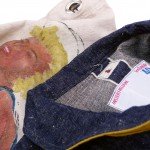
-
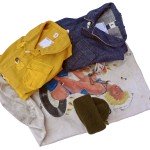
-
Our sales dept suggested we’d show some skin?
-

-
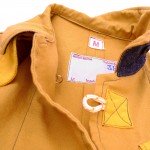
-
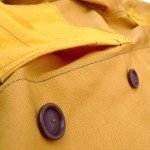
-
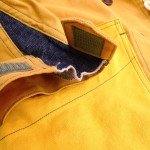
-
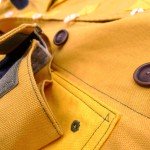
-
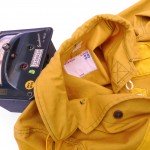
-
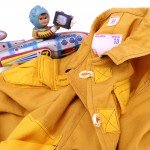
-
Our first Watchman customer, visiting from Kepler-186f
-
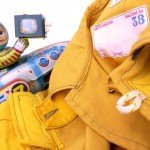
-
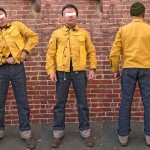
-
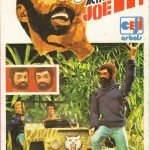
WATCHMAN Jacket, Okinawa & Banana Camo (Raft Yellow)
“Sea Hunt” Collection, mfsc Spring 2014
Those with beauty sleep requirements should greet the suggestion of joining the crew of a military ship with “Euhh, like no“.
While at sea, days are divided in six watches of four hours, if I remember well. A typical work day on board starts with the 0730 wake-up call, and ends somewhat about nine hours later. Then comes the watch. If the 2000 to 2400 is not bad, the mid-watch of 0000 to 0400 is lovely.
I thought of leaving the mission to comply with the International Regulations for Preventing Collisions at Sea rules of 1972 to more qualified personnel, and decided to work around those graveyard shifts by dozing off. In the dimly lit sauna-like transmission cabin where I stood my watch, I developed an elaborate survival routine. It involved finely tuning my ear for the sound of approaching footsteps as I laid on the steel floor, and a well rehearsed fully-alert facial expression conveying a “just picking up my pen, Chef” type message.
I never got caught by the chef de quart though. I suspect that efforts at keeping that cabin productive past midnight had long been abandoned by command. By the end of my tour, I eventually found an actual folding cot, concealed behind some clunky equipment belonging to the radio guys in the adjacent cabin.
And I thought I had the routine down…
To balance with such fine examples of efficiency and professionalism, a ship at sea needs a proper watchman. The International Maritime Organization stipulates that:
“Every vessel shall at all times maintain a proper look-out by sight and hearing as well as by all available means appropriate in the prevailing circumstances and conditions so as to make a full appraisal of the situation and of the risk of collision.”
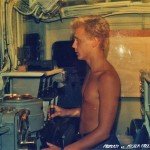 
And now, with no further ado, the stuff of legend, your pulp fiction dose of non-sense, the anticipated episode of “Tall Tales From Delusion Island”!
Here she goes.
…While cruising warm tropical waters, the Watchman Jacket turned out to be a practical garment for the Team’s lookout. Not every day brought its load of sunken XVI Century galleon cargo. So, standing watch on deck or at the helm could prove monotonous. The multiple pockets became a blessing. Housing everything from notebooks, first aid kit, carving knife, maps, snacks, rum flask, iPod… and of course the apple to keep the corpsman away.
When scouting on shore, the sturdy denim twill version was often preferred over the high-visibility raft yellow model, a color typical of pro seafaring gear.
Granted, denim is a good look in the jungle, but signaling your presence is a double edged machete. So here is another story for you.
The Team had organized a few expeditions to Netherlands New Guinea (known today as Indonesia), attempting to shed light on the fate of an adventurous 23 year-old by the name of Michael Rockefeller (yes, that Rockefeller), who vanished in November 1961 while collecting Art on cannibal territory, of all places. This unlikely outcome of privileged upbringings stirred the International press interest in the region. Extensive Dutch government and Rockefeller family organized air-sea search parties flocked.
All that was found was an empty red gasoline can that the young explorer had strapped himself to while trying to reach shore after his boat capsized at the mouth of the Betsj river and drifted to sea… His companion of misfortune, scientist Rene Wassing, who opted to cling on to the capsized boat and wait for a rescue team, survived.
So…
Did Michael simply drown?
Was he abducted by Papuan tribesmen and promoted Great-White-God-Who-Comes-From-The-Sea?
Was he speared by an aggravated headhunter protecting his stone age status?
Was he spotted some seven years later on the remote island of Kanapu, as claimed a mysterious Australian smuggler known as ‘Donahue‘?
Is he hanging in the Asmat Chief’s hut, like on the wall?
Crocodile bait?
….
Are you still there?
Allo.
Allo?
For the brave few still awake, the 1961 documentary film “Le Ciel et la Boue” (“Sky Above and Mud Beneath”), although not directly related since it documents an earlier event (a 1959 French expedition that crossed the then uncharted jungles of the entire New Guinea island, from South to North), would provide a proper visual backdrop to the above (true) story. I just found a copy on DVD (it’s an added bonus on the 1976 French film “Black and White in Color“, easier to find than the original documentary), looking forward to watching it.
Another recent find is “La hache de pierre“, a book by Gérard Delloye documenting the filming of that 1959 ethnographic endeavor. The footnotes mention that the book brings some interesting perspective on Michael Rockefeller’s vanishing… Most photos below are copyright of Tony Saulnier, photographer on that venture.
In 1961, the year of the disappearance, Operation Trikora was to take news anchors attention away from this Rockefeller case. But that’s another story, enough drifting for a day.
However, for the latest whereabouts of Michael Rockefeller, insomniacs can look here and there and everywhere.
-

-
Michael Rockefeller 1961
-
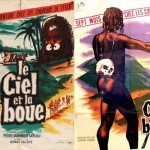
-
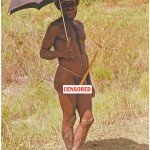
-
Protecting oneself from the ravage of the sun
-
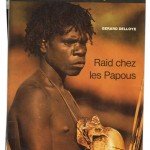
-
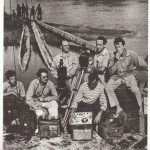
-
French team that filmed “Le Ciel et la Boue” 1959
-
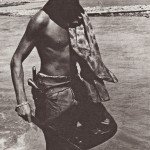
-
Gerard Delloye, author of “La Hache de Pierre”
-
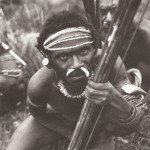
-
Asmat warrior, West Papua
-
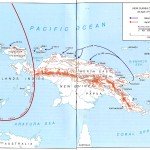
-
New Guinea
It’s almost time for Kumbaya, so let’s regroup around our Spring 2014 “ Sea Hunt” camp fire.
The Team liked to keep it light on emotionally-charged rescue missions. While on treks in West Papua, the running joke with the mangrove-scouting pirogue patrol was that in the event of an encounter with javelin-agitating Asmat headhunters, Team members could use the raft yellow Watchman jacket to go climb up banana trees and hide. The name ‘banana camo’ stuck, while the denim issue was nicknamed ‘Okinawa’ due to the provenance of the sugarcane fibers that constituted 50% of the fabric content.
This original Mister Freedom® jacket design is somewhat of the UFO of our “Sea Hunt” Spring 2014 Collection.
The two lower chest pockets are inspired by a 1930’s US Army pullover denim shirt. The keen eye will notice that the Watchman Jacket pockets differ from its 1930’s sisters however. There is an added layer with a slanted opening, upgrading the original somewhat impractical ‘map’ pockets to ‘shove-it-all-in’ status.
Serendipity has it that Mr. Gilbert Sarthre, cameraman on that French 1959 expedition, was wearing one of those 1930’s US army denim pullover shirt. Military surplus was not an unusual part of an adventurer’s field gear, as often documented in period photography and old film footage.
-
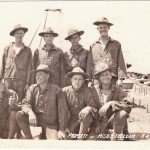
-
Denim pullover shirts, US Army circa 1937
-
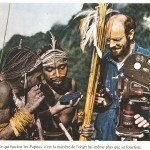
-
Cameraman Gilbert Sarthre wearing a surplus 1930s US Army denim pullover shirt, 1959
-
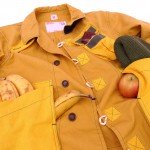
-
Banana tree survival kit, tested April 2014.
As with our Skipper Jacket, hi-tech Velcro® closures are featured on the slanted pockets and wrist cuffs.
Removable buttons, a feature of several early vintage uniforms and workwear, made snagging less likely during laundry. For the Okinawa Watchman, we used vintage New Old Stock composite anchor ring-buttons, familiar to those of you who have already flown a Pensacola seaplane.
The ‘Banana Camo’ features buttons made from, you guessed it, tropical palm trees (corozo wood, aka ivory nut.)
On the chapter of the nautical type front closure, the button attachment loops are made from genuine NOS paracord, an obvious overkill, I agree.
The WATCHMAN Jacket is designed in California by Mister Freedom® and manufactured in Japan in collaboration with Sugar Cane Co.
SPECS:
FABRIC:
a) “OKINAWA” Denim: Unsanforized 10 Oz. left-hand twill indigo denim, 50% cotton 50% sugar cane fibers, solid white Selvedge ID, milled in Japan. (SC401)
b) “RAFT Yellow” canvas, aka ‘Banana Camo’: New Old Stock 100% cotton canvas, mid-weight, solid selvedge. Two different shades of yellow are used. The body is more mustard yellow, while pockets offer a subtle contrast with a brighter yellow (for US production only). We found a limited amount of this NOS canvas.
DETAILS:
* An original mfsc pattern, inspired by the wonderful world of vintage clothing and cannibals.
* Shorter type length, reminiscent of vintage fishing jackets.
* Removable ring buttons, NOS composite anchor for the denim issue, corozo wood for the yellow canvas.
* Two lower ‘double’ pockets and two slanted inverted box-pleat pockets (arm and chest)
* Removable throat latch.
* Velcro® pocket closure and wrist cuffs.
* Split back panels and front panels facing display fabric selvedge.
* Contrast wrist gussets and collar facing fabric.
* 100% cotton stitching, Olive Green color.
* Unlined, with no open or overlocked visible seams.
* Bottom adjusting cotton string.
* Made in Japan.
WASHING/SIZING:
Both “Okinawa” and “Raft yellow” options come unwashed and will approximately shrink to the same tagged size with an original cold soak/line dry. Further shrinkage to be expected with the use of hot water and heat dryer, obviously not recommended for the Okinawa denim issue.
Do REMOVE the buttons when machine washing this garment, as the metal rings tend to snag the fabric during agitation and spinning cycles. Please note that some color transfer from the indigo denim to the yellow canvas might occur should you use a heat dryer.
The fit is quite generous, although intently on the shorter side, somewhere between the Skipper and the Ranch Blouse. The resulting silhouette will obviously vary according to one’s built and body proportions.
I am usually a medium (38) in mfsc jackets, and am wearing a 38 in the Watchman.
Please refer to cold soak/line dry measurements chart below.
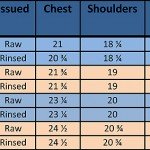 Raft Yellow Available RAW/unwashed.
SIZES:
36 (Small)
38 (Medium)
40 (Large)
42 (X-Large)
44 (XX-Large)
Retail
a) “Okinawa” Indigo Denim $449.95
b) “Banana Camo” Raft yellow Canvas $449.95
Soon available from www.misterfreedom.com
Please call 323-653-2014 or email sales@misterfreedom.com with any questions not answered above.
As always, thank you sincerely for your support 🙂
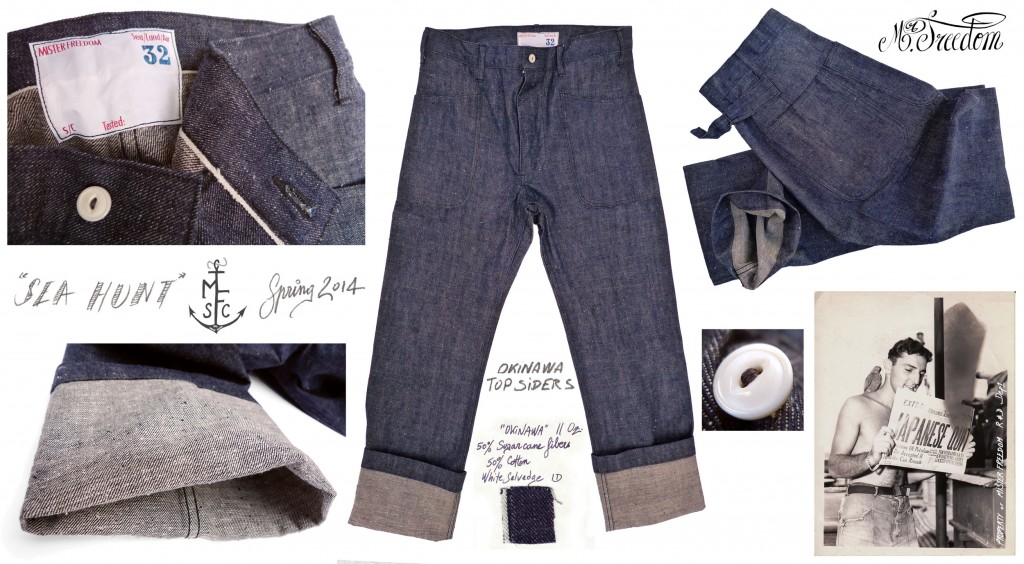
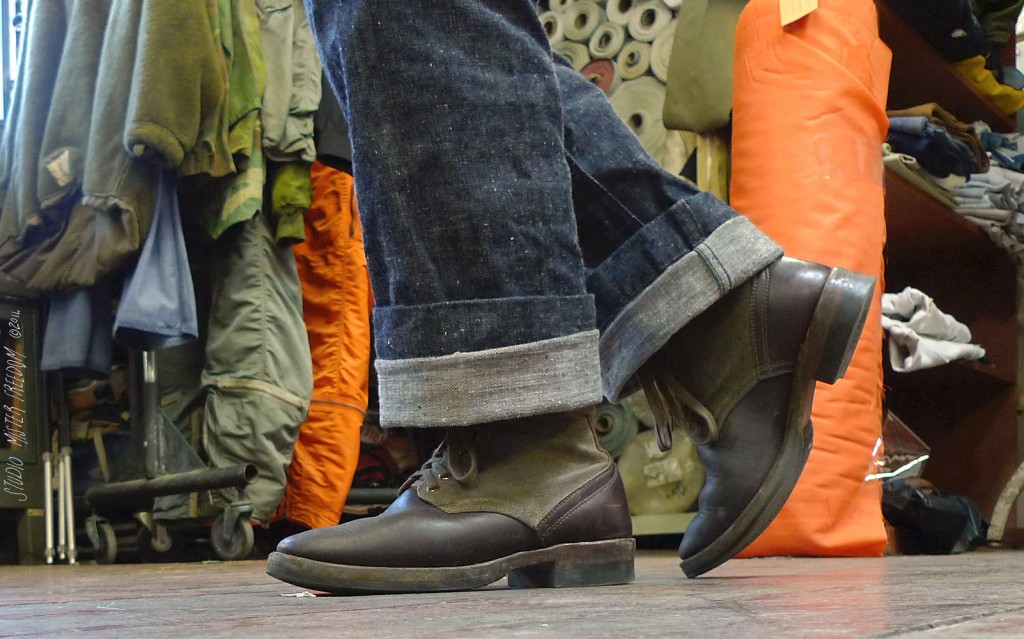
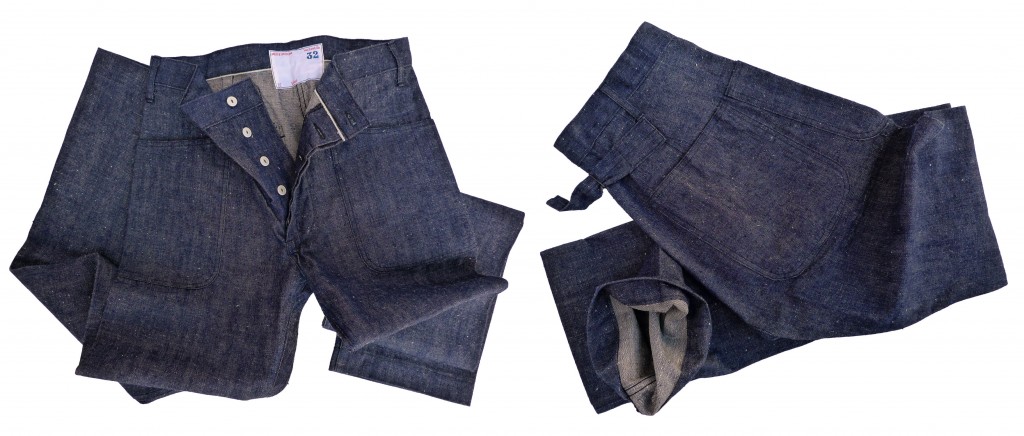
Mister Freedom® Okinawa Topsiders, sugarcane fiber denim
‘Sea Hunt‘ mfsc Spring 2014
The idea was brought to the drafting table by one member of the Team, a retired Navy snipe. The beat-up denim work pants that had accompanied him in his early years at sea turned into the basic pattern of the mfsc “Topsiders”…
-o-o-o-o-o-
Denim often goes in pair with imagery of US Navy ships at sea during WW2.
Anchored in popular culture by Hollywood, immortalized in such great movies as “The Sand Pebbles“, the below-and-above-deck sailor getups meant denim and chambray. Never to be worn off-base or off-ship, work outfits of enlisted personnel consisted of denim dungarees matched with a choice of chambray shirt, white skivvy or non-regulation sunburned skin. The expertly shaped “Dixie Cup” topped that familiar swabbie silhouette.
Spare sets of work clothes were often privately purchased, according to one’s chores. As a result, period photos often display an eclectic mix of regulation and non-regulation dungarees, including seafarer-type flares in the 1930’s… Same drill with chambray shirts, as non regulation chin straps and pocket flaps are sometimes spotted on early shots.
For further reading on WW2 USN dungarees head over to this RIVETED blog post by artist Patrick Segui.
(All below photos from MF® private photo archives, gathered from several photo albums.)
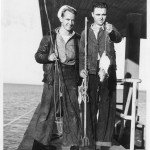 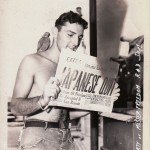 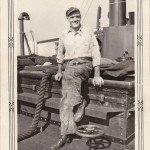 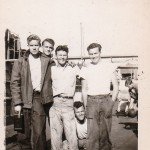 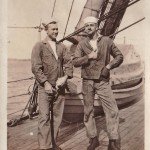 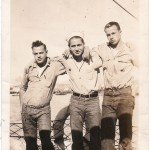 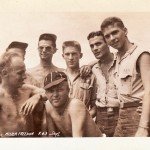 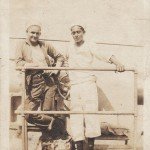
Although personnel in the Army was also issued sets of denim work clothes (such as M1937 shirt and trousers, M1940 chore jacket), these didn’t ‘make the cut’, as they were replaced by Olive Drab Herringbone Twill field uniforms, in 1941. This assured OD HBT its place in the limelight, a center stage spot in the fabrics of heroes.
For both 1940’s US Marines and Army personnel, HBT became the field fabric, while blue denim stuck to sailors of the US Navy.
Photos below are US Army pre-HBT days, 1937~39 according to album personal notes.
 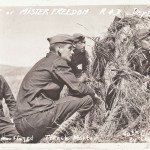 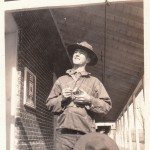 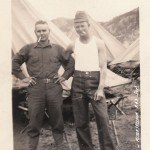
-o-o-o-o-o-
An original pair of vintage 1940’s wrap-leg US Navy issued dungarees has somewhat of an ‘awkward’ fit: very snug waist, no hips, uncommonly high-rise and very wide straight leg. I have to admit that I quite like that silhouette on old photos, albeit challenging by today’s standards for some.
However heavily inspired by an original pair of USN wrap-leg dungarees, our “Okinawa Topsiders” feature an adapted cut. Yes, we decided to make it even more ill-fitting than an original. Mission accomplished. They now have a mid-rise, similar to the rise of our Californian blue jeans. Please note that this lower rise might not work for some who are partial to traditional authentic high-waisted sailor trousers…
We also added the old cinch-back strap for good measure.
Because of the one piece wrap leg construction, it would appear that no selvedge would be showing? Have no fear, it is inconspicuously displayed twice! First in the waist band and then in the crotch gusset. Yes Sir, and here is why:
We opted for one of our long-time favorite denim fabric, the “Okinawa” indigo selvedge left-hand twill SC401 denim, a blend of 50% cotton and 50% sugar cane fibers patented by Sugar Cane Co. The width of this shuttle-loom-milled textile is about 29 inches. This is not wide enough for an entire wrapped leg. Therefore, an extra piece of denim fabric had to be spliced in order to ‘finish’ the leg. This is where the selvedge appears, concealed at the crotch.
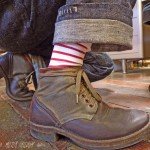 Look Ma… no red lines! Like the vintage original from our archives, our “Topsiders” feature four patch pockets, the front ones judiciously positioned to discourage Parisian metro pickpockets. We did managed to make them a bit more accessible than the wrap pockets on our original “7161 Utility Trousers” from 2007, so no need to take your pants off to retrieve loose change. The back pockets are positioned low and are quite deep.
To give our Topsiders a flair of USN undress whites, we chose off-white corozo (aka vegetable ivory) buttons, top and fly.
Labeling:
Our “Sea Hunt” label this season is a nod to vintage European military/utilitarian type labels, with more space left out to fill with custom marking than the usual boasting about ‘Best this/Greatest that’. This ties in with the concept behind this 2014 Collection, where each garment was issued for a specific mission. One would log-in date/location/name and other relevant info with a marking device directly on the white label…
The “Okinawa Topsiders” are made in Japan as a collaboration between Mister Freedom® and Sugarcane Co.
SPECS:
FABRIC: “Okinawa” SC401, unsanforized 10 Oz. left-hand twill indigo denim, 50% cotton 50% sugar cane fibers, solid white Selvedge ID, milled in Japan.
DETAILS:
* Pattern adapted from an original pair of WW2 US Navy denim dungarees.
* Roomy straight leg.
* Wrap-leg construction, no side seams.
* Button fly, white corozo (vegetable ivory nut) top and fly buttons.
* Selvedge waistband.
* Selvedge ‘crotch gusset’.
* Two functioning rounded bottom front patch pockets, two deep rounded bottom rear back pockets.
* Adjustable back cinch strap.
* Skinny belt-loops for 2” wide belts
* Flat felled seam construction for seat and inseam.
* 100% cotton black stitching.
* Customizable mfsc white woven label.
SIZING/WASHING:
The Topsiders come RAW (unwashed) and will pretty much shrink to tagged size.
We recommend an original cold soak of about 20mn, machine spin dry or drip dry, line dry. We don’t recommend heat dryers.
Further washing should be limited to when required by common sense, as in when your jeans are dirty, which obviously greatly fluctuates according to one’s occupation.
It is a good idea to wash denim inside-out when comes bath time, to avoid marbling.
The cut of the Topsiders is pretty generous in the leg and in the waist. It is the nature of the Okinawa denim to shrink and stretch back and forth with each rinse/dry/wear cycle. This eventually settles, but two pairs of waist-32 might end up fitting differently according to the wearer’s build and activities.
The 1½ inch fold of the bottom hem uses a simple single-needle machine stitch. Across the board, the length shrinks to an approximate 34 inches.
I wear a comfortable waist 32 in the Topsiders, with room for the entire family.
I do not recommend sizing down for a slimmer silhouette, as this would result in making the rise appear slightly too low, in my opinion.
Please refer to sizing chart for raw and rinsed measurements. Please note that our rinsed measurements (cold soak/line dry) show minimal shrinkage. Using hot water/power dryer (both NOT recommended) will result in more shrinkage.
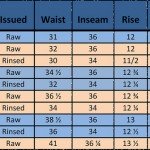
Available Raw (unwashed) ONLY
Tagged Sizes
W28 × L36
W30 × L36
W32 × L36
W34 × L36
W36 × L36
W38 × L36
Retail $439.95
Available soon from www.misterfreedom.com
Please call the store at 323-653-2014 or email sales@misterfreedom.com with any questions not addressed above.
Thank you sincerely for your support
🙂
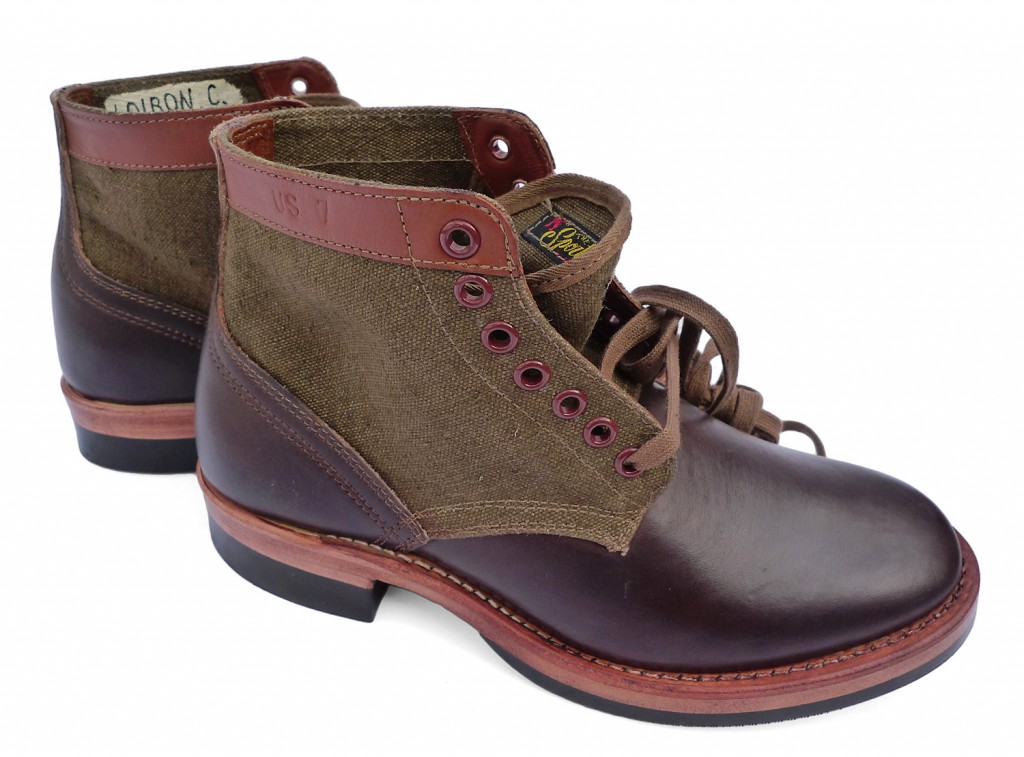
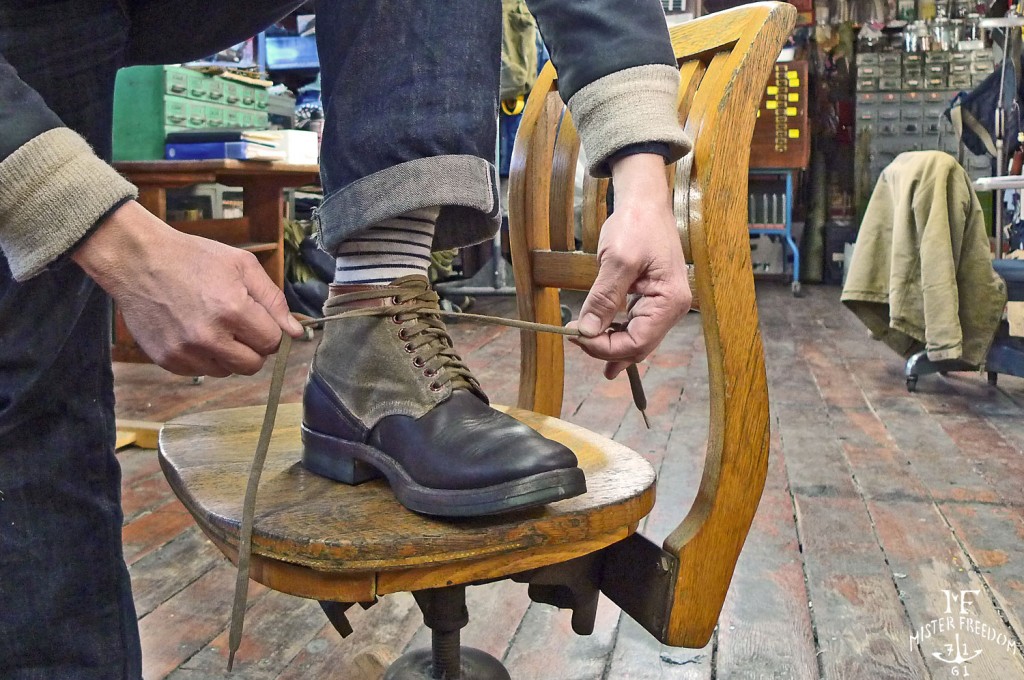 Ok. How does this go again?
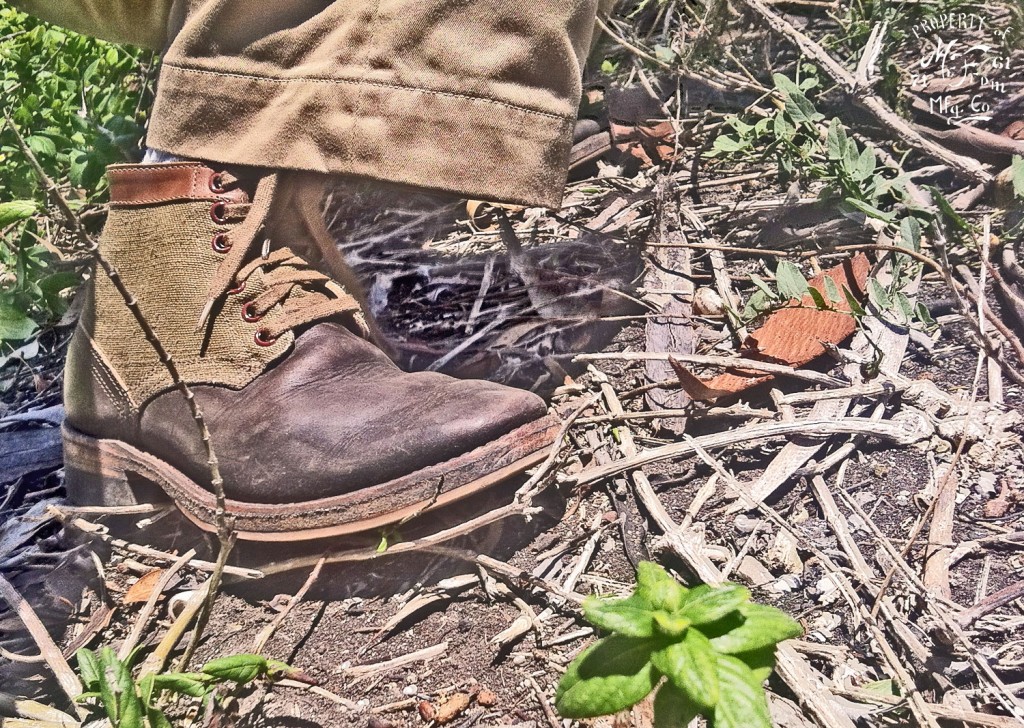 An early ‘Trooper’ proto, spotted in the bush of an undisclosed jungle location
Mister Freedom® “TROOPER BOOTS”, Made in USA, 2014.
The moment I laid my eyes on that old pair of beat-up military boots at the 2012 Inspiration Show in Long Beach, I had a feeling they were trouble. I knew these beauties would lead to Mister Freedom® second endeavor of footwear manufacturing, in the USA… Not your average relaxing walk in the park.
The original culprit vintage shoe was a US military Government issued boot, dated 13 June 1955, double buckle type, first pattern jungle boot. That pair had seen the bush, crossed the tree line a few times in its days.
I wasn’t familiar with that model, so had to do a bit of research when I got back. The story goes that these early jungle boots were nicknamed ‘Okinawa boots‘, as they often shod US advisors flying out of Okinawa en route to mingle with in-Country barefoot montagnards, during the early days(post Geneva) of the US field involvement in Vietnam.
The flat toe box of these Okinawa boots was very similar to that of the old faithful Road Champs I was wearing that day, and I thought of combining a few things for a new shoe to add to the Mister Freedom® “The Sportsman” catalog.
The plan was easy: ruthlessly lift time tested military designs, SOP in the fashion world, and add some MF® jungle juice.
We would use the Champs’ lasts and leather, some olive drab NOS military surplus heavy canvas bags, some NOS “Nitrene” rubber soles, give the shoe a ‘service boot’ type profile, and call them ‘Trooper’, cause Crocs® was taken.
Bam. There it is.
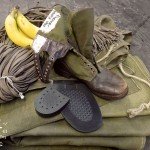
Well, after a year of R&D, we are excited to officially release the FIRST batch, a small run of hand-cut, bench-made, bushwhacking-ready “TROOPER BOOTS”!
The trooper is not for ballet dancing, but will do the bop and behave better in the field than on the runways.
After road testing three protos in 2012, figuring out sole combos, I’ll attest that they are comfortable. Although some adults have used that excuse for wearing velour sweatpants, comfort, when applied to footwear is not a bad idea.
As the designated test dummy I even took a dip in the Pacific Ocean wearing an early pair. The boots reacted well, and the sight of a grown-up advancing in the water fully clothed really amused the children.
Surprisingly, the canvas really stiffened while wet, shrinking and compressing the ankle, softening up and loosening up later when fully dried. This kinda shows that the fiber content of the canvas has some linen or hemp mixed with the cotton.
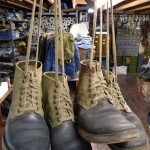 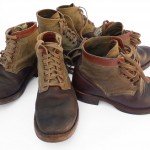 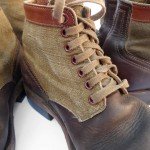
Our Trooper is an un-lined shoe combining leather and a single layer of sturdy mil-specs NOS canvas fabric. One of the challenge resided in keeping the junctions clean, in and out. A complicated origami game of folding and overlapping ensued.
Note that the MF® Trooper Boot will not come customized with someone’s ID painted on the inside. I sometimes mark my own footwear on the inside, probably because I have too much time on my hands. I use regular latex paint, and do a sloppy job not unlike what is often seen on old ID’d military boots.
While on R&R in the cold Country over Christmas, I attempted to water-proof my Troopers (along with my Pensacola Jacket) with some Otter Wax heat-activated fabric dressing. A bit involved of a process, but I am quite happy with the result. The waxed canvas ages very nicely, but so will it when left untreated.
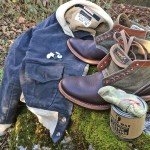
For additional photos of the Trooper, check out USMC MSgt John “VEB” Vintage Engineer Boots blog.
Disclaimer:
Please note that the MF® Trooper Boot is in no way intended as a replica of an original US Army “Okinawa” jungle boot. Nor are we claiming they are appropriate on SOG ops.
There it is.
SPECS:
* An original MF® pattern, inspired by 1950’s US military jungle boots and service boots.
* MF® old school flat toe box.
* Shoe Vamp/Heel: Vegetable tanned cow hide, USA origin. Same leather we are using for the MF® Road Champ engineer boots. Rich dark brown color that will age nicely, according to specific wear and your conditioning preferences.
* Shoe Quarter/Tongue: Single layer heavy canvas from a limited stock of 60’s era NOS duffle bags, EU military surplus origin. Strong cotton-linen blend.
* Ankle Band/Eyelet Facing: Genuine Kangaroo leather, origin Australia. Besides being our choice for the MF® scutler cap head bands, Kangaroo hide was used to make soccer shoes, sometime around 6500 BC. Its qualities include non-stretch.
* Limited supply of USA made NOS ‘NITRENE’ rubber half sole and heel combo, “Non Marking, Oil Resistant, Long Wearing” they say, so that must be true…
* 1950’s NOS cotton laces, French military. Admittedly, these laces are not the perfect length for the Trooper, and need to be wrapped around the ankle, where they won’t necessarily stay in place… We’re working on sourcing the perfect laces, which should happen sometime around 6500 AD.
* Bias taped tongue. I’m only mentioning this because 1) it sounds intriguing 2) sourcing the right vintage HBT tape was unexpectedly complicated…
* Woven MF® “The Sportsman” label on reverse of said tongue.
* Made in USA
SIZING:
The Trooper lasts are those of our Road Champ. If you are familiar with our engineer boot, the fit is the same, if only more ‘flexible’ around the arch/ankle due to lacing.
There is no real magic formula to advise on sizing, as everyone’s foot proportions/sock preferences vary.
However, according to feedback, sizing down HALF your sneaker size seems to work. If you are a 10 in New Balance sneakers, you are probably a 9½ in the Trooper.
And like they say, it always works, sometimes.
CONDITIONING:
The Trooper Boots are low maintenance, easy to break-in. I recommend just wearing them as-is and let your feet do the work. They age very nicely, faster if you chose hiking over playing Angry Birds at home. For those worrying about scuffs, mud, stains and nicks, there might be other more appropriate footwear choices out there.
If needed, leather conditioners such as Pecard can be applied to keep the leather healthy. As mentioned, the canvas can be treated with Otter Wax products, or left as-is and brushed clean when needed.
Available Sizes: 7, 7½, 8, 8½, 9, 9½, 10, 10½, 11, 11½, 12, 13
(Limited availability at the moment, not all listed sizes)
Retail $749.95
Contact sales@misterfreedom.com for details not mentioned above, like… “do they come in black?” or “what’s with the banana bunch?”
Available at our brick & mortar and from www.misterfreedom.com
Thank you for your support.
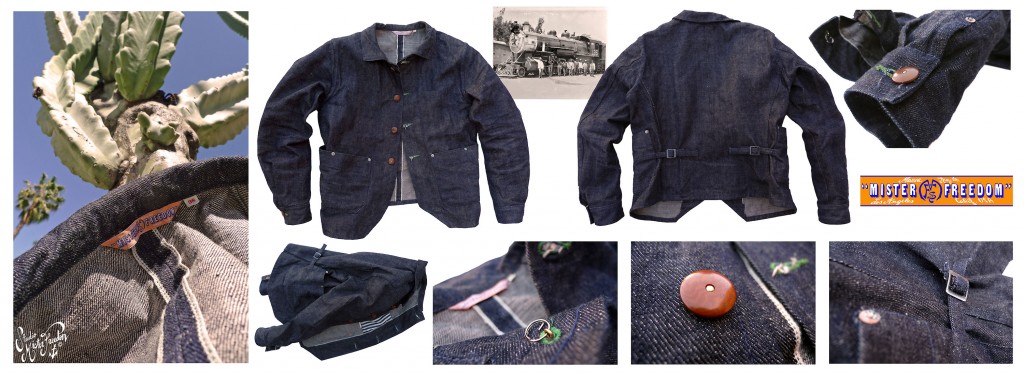
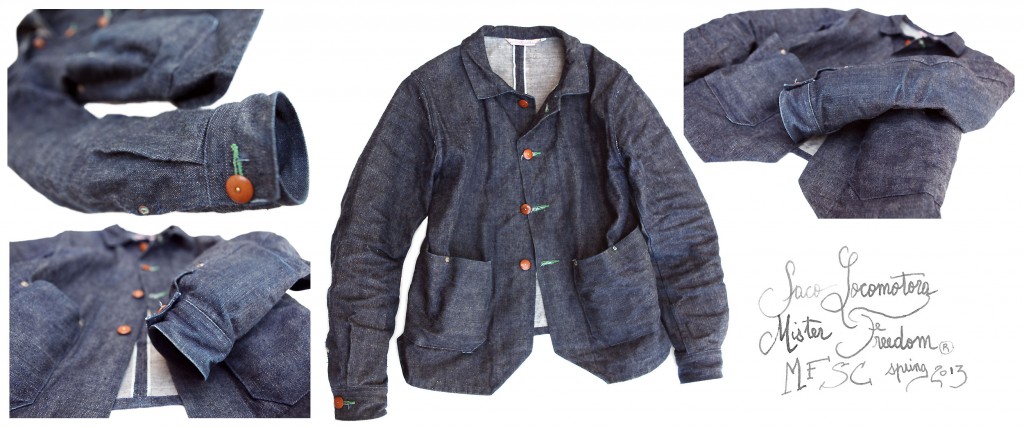
Mister Freedom® MFSC “Saco LOCOMOTORA”, made in USA.
‘Viva la Revolución’ Collection, Spring 2013
Hinting at an instrumental tool of the Mexican Revolution here is our SACO LOCOMOTORA, aka El Loco as we call it around here.
The railroad system in Mexico played a major part in the unfolding of the Revolution. Many folk songs (Máchina 501 for instance, or many other tunes played by la Banda Tlayacapan who accompanied General Zapata during the war) celebrate the key role of that modern mean of transportation. Trains allowed the speedy transport of troops to the front lines, turned hospitals on wheels with families tagging along, or were used as plain torpedoes loaded with explosives.
In 1911, Emiliano ‘El incorruptible’ Zapata met with Francisco Madero, freshly cheated of the National election by Porfirio Diaz, to discuss strategy for the fight to regain power.
The meeting place? Colonia railroad station, aboard Zapata’s famous steam locomotive No. 279, his headquarter since 1909. That historical steam Engine has survived and a restored version can still be seen if you take a trip down Cuautla way, State of Morelos, southern Mexico.
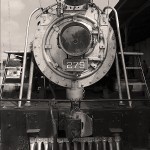 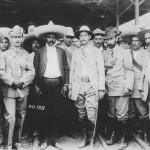 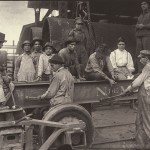
For our first ‘iron horse’ related garment, we designed a type of denim railroad jacket ‘from scratch’, keeping a ‘local artisan made’ feel to it. We combined elements of twill work-wear jackets, both from the Old and New World, resulting in a cross-breed between a European work coat and a classic American denim Railroad jacket.
We kept a shorter silhouette for El Loco, somewhat typical of period Charro suit jackets.
The deep side wrap copper-riveted pockets were designed to hold wrenches, rags, log books and various mechanic’s tools. They will also hold a wallet or an iPhone, should these prove more useful to you during the day 😉
The split back panel pattern displays the denim selvedge on the inside, which will result in ‘tracks’ (bada bing), naturally showing after repeat wear and sofa staining.
As with our Vaquero Blue Jeans, we are using an original indigo dyed left hand twill denim developed by Sugar Cane Co in Japan, referred to as “Okinawa 301“. It blends cotton yarn with recycled sugar cane fibers (50/50) in a strong, slubby, hairy, coarse denim twill, guaranteed to age beautifully.
The green accents of the button holes/eyelets are reminiscent of older American work-wear details, green also being a color not foreign to the Mexican National Flag.
We opted for corozo wood detachable buttons (aka ring buttons), a typical feature of early work and military coats, that allowed washing the garment without its hardware.
The collar shape and angle is a nod to turn of the Century patterns.
Using flat felled seams and single machine construction we had el Loco made in Los Angeles, California, as a collaboration with partner in crime Sugar Cane Co.
SPECS:
PATTERN: An original MFSC pattern. Designed by Mister Freedom® and combining elements of early work coats from Europe and USA.
FABRIC: Raw 14 Oz. indigo dyed selvedge denim, left hand twill. 50% cotton blended with 50% recycled sugar cane fibers. White selvedge with green ID line. Milled in Japan.
Note: For detail orientated folks, the collar facing is made of NOS 12 Oz. selvedge Cone denim, same fabric as the Californian Lot.54
DETAILS:
* Shorter silhouette.
* Six high button front style, allowing easy access to higher waist style trousers pockets. Detail also typical of horseback riding coats, allowing the jacket to ‘break’ at the proper place when fully buttoned.
* Single piece front panels, no shoulder yoke.
* Adjustable side cinch straps, with vintage NOS metal buckles.
* Corozo wood detachable ‘ring’ buttons.
* Green color button holes and eyelets.
* Deep wrap pockets, double compartment.
* Concealed left chest pocket, made of NOS stripe cotton twill.
* Selvedge used in split back, button front panel/pockets/cuffs facing.
* Single needle and chain stitch flat felled seams, with 100% cotton tonal thread stitching.
* Designed and Made in the USA.
PACKAGING: An original MF® denim bag, made in our studio, to sling around for your next trip to the local organic Farmer’s market.
SIZING/SHRINKAGE:
The “Okinawa 301” denim is RAW and unsanforized. Overall shrinkage from rinsing/washing should be about 5% to 8%, according to water temperature. This fiber denim will shrink with an original cold soak and line dry. It will expand a bit again with wear, then shrink again with subsequent rinsing. This normal evolution should settle after a while.
El Loco will shrink to TAGGED size.
We recommend an original cold soak (about 30mn, no agitation), spin cycle and line dry. This will get you minimal shrinkage and retain ~100% of the indigo color. Some bleeding is expected with normal wear (from blue hands to blue armpits. Indigo bleeding will wash off.)
As always, boiling is not recommended (too much color loss), just get your size.
Remember that you will not get beautiful patina from extensive unneeded washing, but rather from repeat wear.
I usual wear a 38 (Medium) in all mfsc jackets, and I wear a 38 in this denim coat.
Note: The photos above are from a slightly worn jacket, showing very minimal wear after an original cold soak. Production is UNWORN and raw.
Please refer to sizing chart below for approximate raw/cold soak measurements:
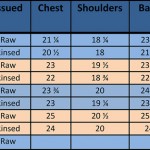
Available RAW/Unwashed.
SIZES
36 (small)
38 (Medium)
40 (Large)
42 (X-Large)
44 (XX-Large)
Retail $439.95
Call or mail sales@misterfreedom.com at 323-653-2014 to get yours while they last. We ship internationally to select Countries. Thank you for the support, Señoras y Caballeros.
|




